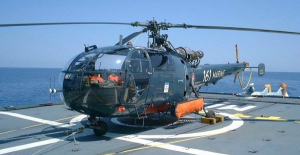The Indian Army has recently contracted with private firms to lease helicopters for logistics support to remote posts. Under this agreement, the helicopters will service 16 posts in the Jammu region, with an additional 28 posts in Jammu and Kashmir and Ladakh to be connected. This initiative is set to operate for 150 days starting next year. This development follows a tender issued by the army a year ago for leasing 20 helicopters for reconnaissance and surveillance missions over a five-year period.
The helicopters needed for both categories are expected to be light helicopters, specifically the Cheetah and Chetak models. These helicopters serve as critical lifelines for forward posts in the most challenging terrains, especially during the harsh winter months. They are not just a means of transportation for personnel and supplies but also the only means for evacuating casualties when no other options are available.
One of the key reasons the army cites for contracting civilian helicopters is to preserve the operational lifespan of its current fleet. The first Chetak helicopter was inducted into the Air Force, while the first order for the Cheetah was placed by the forces in 1971. This indicates that these helicopters are nearing the end of their service lives and require timely replacement. The majority of these helicopters are over thirty years old.
The armed forces plan to retire these aircraft starting in 2027, although efforts to phase them out have been ongoing for over a decade. At one point, the army had selected the Russian Kamov 226 to meet its light helicopter requirements. However, discussions regarding indigenous content, coupled with the conflict in Ukraine, have diminished hopes for a resolution on this front.
The Chetak and Cheetah helicopters are expected to be replaced by HAL’s Light Utility Helicopter (LUH). The government has approved the Limited Series Production (LSP) of 12 LUHs, with the first helicopter slated for induction in December, as per Defence Ministry sources. While it is reported that the army alone requires 225 of these helicopters, a formal agreement with HAL for their acquisition has yet to be finalized.
Dhruv Yadav
